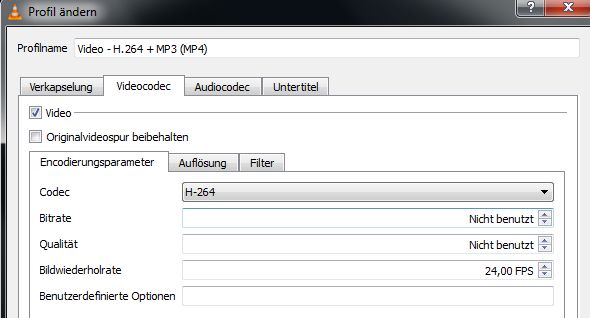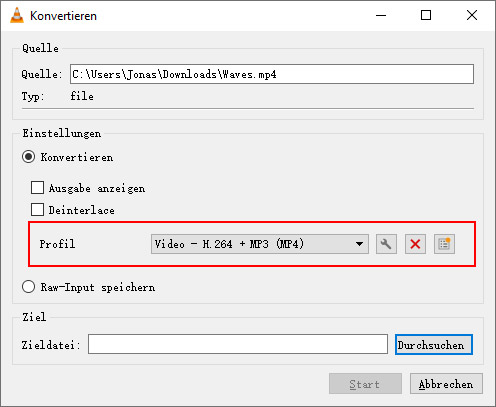- Vlc Media Player Mac Video Verkleinern
- Vlc Media Player Video Komprimieren Mac
- Vlc Player Mac Video Verkleinern
- To start converting, open VLC and click Media Convert/Save. Click “Add” to the right of the File Selection list on the File tab. Browse to the video or audio file you want to convert and open it. Click “Convert/Save” to continue. Under Convert, select the video or audio codec and container to which you want to convert.
- While the VLC media player not showing video even the VLC is the latest version, it is time to configure the video output mode settings. Launch you VLC and navigate yourself to the “preferences” in the submenu from choosing the “tools” in the menu. Go to the video settings panel by tabbing the “Video” icon from the left side menu.
- First, open VLC and click Media Open File. Then choose a video to play in VLC. Click Tools Effects and Filters and Video Effects to open the window shown below. It can look a little intimidating on a first glance, but if you focus on one category at a time it will all make sense.
How to Create a GIF from a Video with VLC and Photoshop?
This best video player Mac is a universal media player that automatically recognizes the file format of the video or audio file you want to play. So you can count on it to reliably play the most popular audio and video file formats including AVI, MP4, MP3, WMA, WAV, FLV, MPEG, and more.
VLC is an open-source and versatile media player with tons of impressive features. You can extract frames from the video you want to gif using VLC, then make adjustments and turn the frames into a gif with Photoshop. Below are the specific steps to create a GIF from a video in VLC and Photoshop.
Step 1. Play and Record the Scene You Want to GIF in VLC.
The first thing to create a GIF from a video is to capture what you need from the video to generate a video clip.
- Launch VLC > go for Tools and select Preferences from the context menu at the top > In Input & Codecs Settings, reset a new directory for storing recording files. Or recording will be saved in C: drive/Finder by default. Then save the changes and reboot VLC to have the settings to work.
- Click on Advanced Controls under View tab if there is no red Record control in the timeline area.
- Click Media and Open Files from the context menu to play a video file.
- Locate to where you want to begin > click the red button to start recording and hit the button again to stop. The video clip should be auto saved in the location you've set.
Step 2. Split the Recording into Frames
- Go to Preferences once again and click the option All under Show Settings at the bottom.
- Now scroll down to Video from the sidebar > expand Filters and click Scene filter > filter settings will be shown on the right side where you can set the image format, file location, recording ratio, etc. It's worth noting that you should type or copy a location path in the field of Directory path prefix to set a new location. And hit Save and reboot VLC to apply your settings.
- Select Filters in the sidebar > place a check mark in the box of Scene video filter to enable the filter.
- Go back to the home page and click Media and Open File and play a video you want to gif. Now the video will be converting into frames one by one, and they will be saved automatically in the location previously made.
But this is not the end, you need another software to convert these frames to GIF. Here we use Photoshop for the next step. Ulead photoimpact 7 kostenlos download.
Step 3. Make GIFs from Frames with Photoshop
- Launch Photoshop and go to File > Scripts > Load Files into Stack.
- Click Browse and load the frames you made in VLC > select OK and wait for loading.
Step 4. Create Frame Animation and Export Images as GIF
- In the timeline area, click Create Frmae Animation > then go for the Hanburger menu at the rightmost of the timeline > select Make Frames From Layers from the context menu. And each layer will become one frame of the GIF animation.
- Click the Play/Pause button to play the GIF animation. You'are allowed to make the GIF to play on loop, set up the dealy time between each frame, crop a GIF, and many more.
- Now go to Files > Export > Save for Web (Legacy) > Choose the file format as GIF and make adjustments like color grading, image size and others > select an output directory. Now you have made your own GIFs!
This is the entire process to make a GIF from a video with VLC and Photoshop. You can tell that it is pretty complex bacause you need two different tools, VCL to extract the desired scenes as frames, and then Photoshop to make these frames into a GIF image.
A H.264 file is a video file encoded via the H.264 compression method and provides high quality videos in relatively lower bitrates. It is by far the most commonly used format for the recording, compression, and distribution of CCTV content. Almost all of the CCTV systems make use of H.264 codec. In this article we will show how to play H.264 files from your CCTV camera or DVR/NVR using the VLC player and how to convert H.264 video files to MP4 format.
How to play H.264 files on VLC player
If you have the CCTV camera videos in H.264 video format, how can you play these H.264 videos in VLC player on Windows or Mac computer? Here’s the step-by-step guide on how to play H.264 videos on VLC player.
Vlc Media Player Mac Video Verkleinern
Step 1. Download the latest VLC version here and have it installed on your computer.

Vlc Media Player Video Komprimieren Mac
Step 2. Launch VLC media player. Go to Tools and then click Preferences.
Step 3. Tick All to show all the Settings.
Step 4. Select “H264 video demuxer” from the Demux module. Next click Save.
Step 5. That’s all. Now you can open up and play/view the H.264 files in VLC media player.

Troubleshooting tips if VLC is not playing H.264 files
Vlc Player Mac Video Verkleinern
If you’re still having problems and you can’t play H.264 videos on VLC player, try the following troubleshooting tips that may help to fix the issues:
- Update your VLC media player to the latest version and make sure to update VLC codecs.
- Force H.264 demuxer in VLC preferences. Go to Tools > Preferences > Show settings, click All > Input/Codecs Demuxers: Demux module [H264 video demuxer].
- Convert H.264 files to the MP4 format (read the instructions on the next section).
- Sometimes renaming the file extension to .mpg does the trick. Try it and see if it plays on VLC.
How to convert H.264 files to MP4
Another way to play H.264 videos on VLC is to convert H.264 files to MP4 format first, and then play your CCTV videos on the VLC media player. However, nowadays most of the CCTV manufacturers provide built-in converters, so when you export the videos they’re already on MP4 format.
Here are the steps to convert H.264 files to MP4:
Step 1. Use a free video converter such as VSDC Free Video Converter or Subler. Download it and install it on your computer.
Step 2. Click “Add files” and add the H.264 files that you need to convert.
Step 3. Choose “MP4” as the video format you want to convert to.
Step 4. Click Convert, wait until it’s done and then Save.
After you’re done converting the H.264 files to MP4 format, you will be able to play and view the videos in the VLC player.